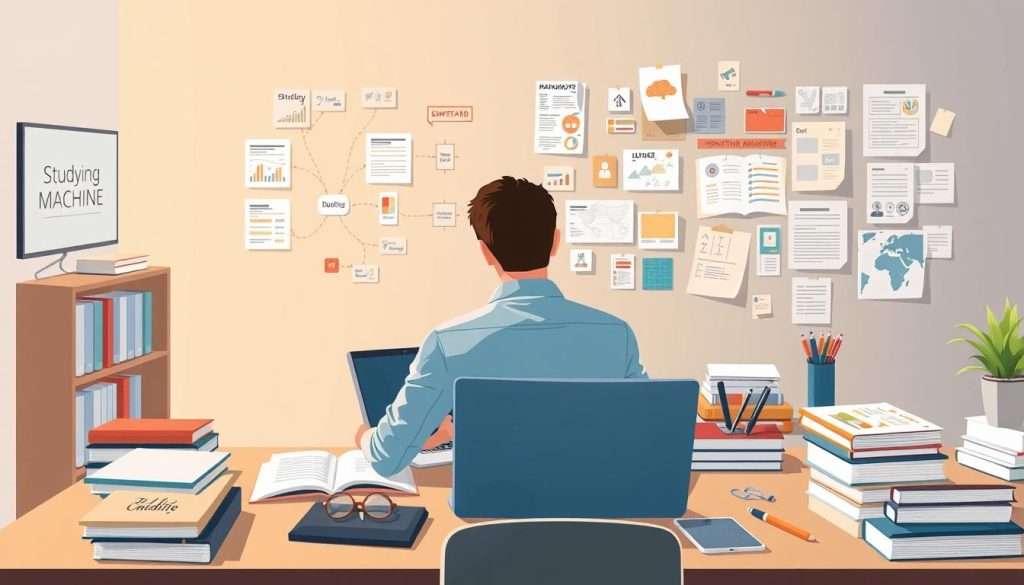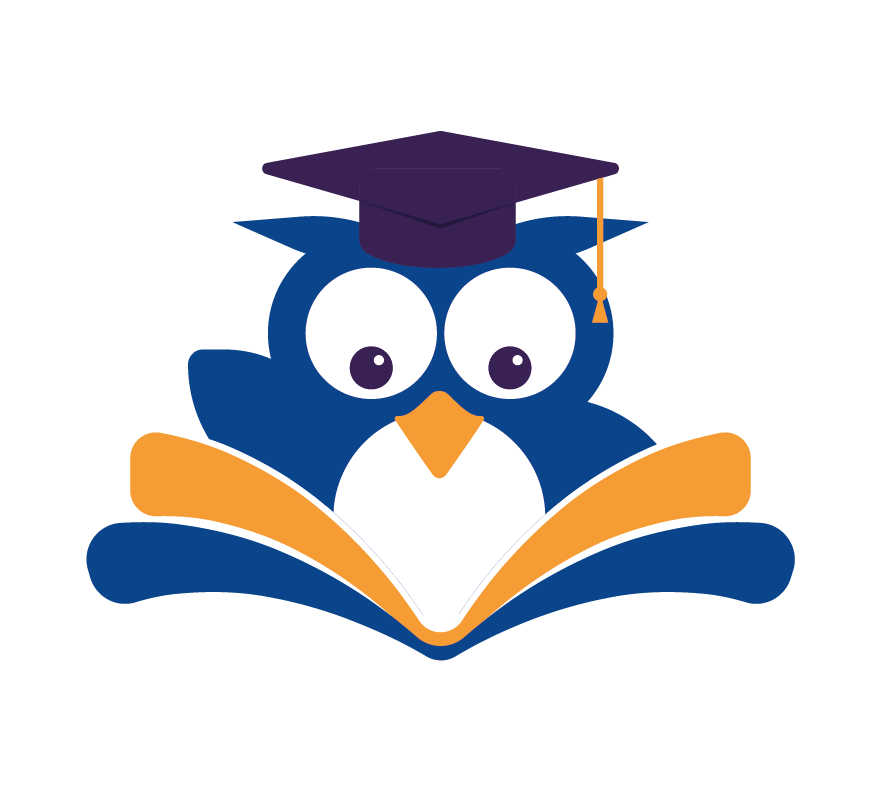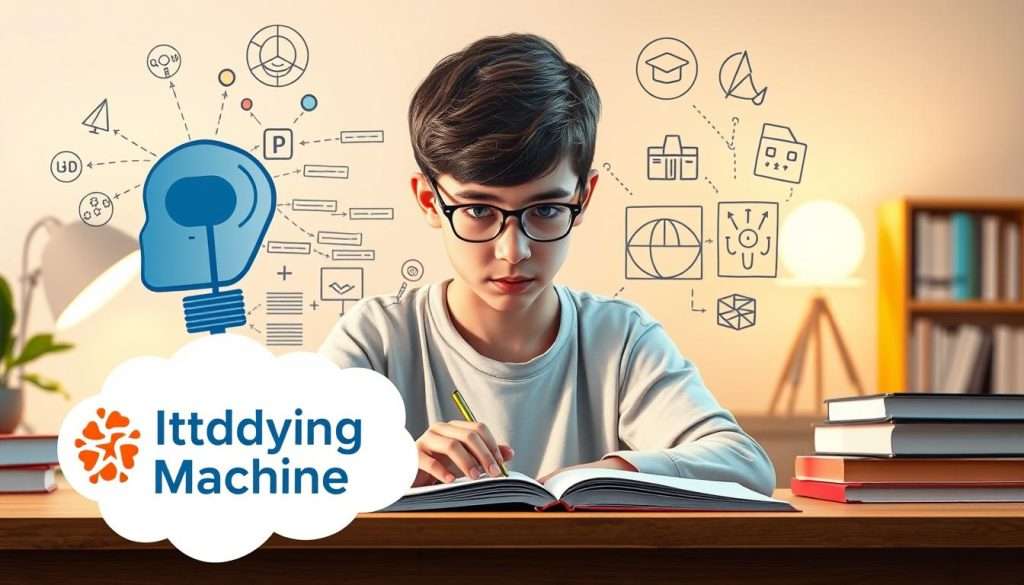Have you ever thought about how you think and learn? Being aware of your own thought processes is a powerful tool. It can change how you learn. We call this metacognition, or “thinking about thinking.”
By knowing how you think, you can control your cognitive strategies. This makes learning more fun and efficient. It’s not just knowing how you learn. It’s using that knowledge to get better at it.
As you get better at metacognition, you’ll know what works best for you. You can change your approach as needed.
Key Takeaways
- Metacognition is about being aware of how you think and learn.
- It enables you to take control of your cognitive strategies.
- By being more metacognitively aware, you can make your learning more efficient.
- Understanding your thought processes helps you adapt your learning approach.
- Metacognition makes learning more enjoyable and effective.
What Is Metacognition and Why Does It Matter?
Metacognition is the skill of thinking about your own thinking. It helps improve learning by knowing how you learn best. By understanding your strengths and weaknesses, you can learn more effectively.
Exploring metacognition can change how you learn. It makes you a better, more independent learner.
The Science Behind “Thinking About Thinking”
Metacognition has two parts: knowing how you think and controlling your learning. The first part is understanding your thinking processes. The second is using strategies to manage your learning.
Studies show that students who think about their thinking do better in school. They can adjust their learning to fit different challenges.
How Metacognition Enhances Learning Outcomes
Metacognition lets learners control their learning. They can set goals, check their progress, and change their approach as needed. This makes them more independent and effective.
It also encourages reflective thinking. Learners can check their understanding and find areas to improve.
Research-Backed Benefits
Research shows metacognition greatly improves learning. The Education Endowment Foundation found it can add seven months of learning. It also boosts achievement, independent learning, and learning in new situations.
Real-World Success Stories
Many have used metacognitive strategies to improve learning. For example, a study on reading comprehension showed big improvements. These stories show how metacognition can make learning better in real life.
The Core Components of Metacognition in Learning
Metacognition is key to learning well. It’s not just one skill but a mix of several. These skills help you manage your learning journey.
Metacognitive Knowledge: Understanding Yourself as a Learner
Metacognitive knowledge is about knowing your learning style. It’s figuring out how you learn best and what strategies work for you. For example, you might find you learn better visually or need a quiet space to focus.
This self-awareness is vital. It lets you tailor your learning to fit your needs.
Metacognitive Regulation: Controlling Your Learning Process
Metacognitive regulation is about managing your learning. It includes planning, monitoring, and evaluating your progress. It’s about setting goals, picking the right strategies, and adjusting as needed.
This part is crucial for staying on course and reaching your learning goals.
Metacognitive Experiences: Learning from Your Learning
Metacognitive experiences are your thoughts and feelings while learning. They help you adjust your learning strategies on the fly. For instance, if you’re struggling, you might try a different approach or ask for help.
By grasping these three areas, you can boost your learning. It’s about knowing how you learn and using that knowledge to get better at studying.
To sum up, metacognitive knowledge, regulation, and experiences are all important for learning well. Mastering these areas helps you handle tough material and reach your goals.
- Metacognitive knowledge helps you understand your learning strengths and weaknesses.
- Metacognitive regulation enables you to control your learning process.
- Metacognitive experiences allow you to learn from your learning in real-time.
How to Assess Your Current Metacognitive Skills
Checking your metacognitive skills is the first step to better learning. It helps you understand what metacognitive skills are and how they affect your learning.
Step-by-Step Self-Assessment Guide
To check your metacognitive skills, follow these steps:
- Identify your learning goals and objectives.
- Reflect on your current learning strategies and their effectiveness.
- Evaluate your ability to plan, monitor, and adjust your learning approach.
Metacognitive Awareness Inventory
Use a Metacognitive Awareness Inventory to find areas for improvement. This tool checks your metacognitive knowledge and regulation. It shows your strengths and weaknesses.
Interpreting Your Results
After finishing the inventory, understand your results. Look for patterns or areas where you struggle. Think about how to tackle these challenges.
Identifying Your Metacognitive Strengths and Weaknesses
Knowing your metacognitive strengths and weaknesses helps you improve. It’s key for better problem-solving skills and learning. This self-awareness lets you make smart changes to your study habits.
Planning: The First Step in Metacognitive Learning
Planning your learning can really help you do better. By controlling your study plan, you can get better results. You’ll also learn how to study more effectively.
How to Set SMART Learning Goals
Setting SMART (Specific, Measurable, Achievable, Relevant, Time-bound) goals is key. It makes your study sessions clear and focused. For example, instead of saying “I want to be better at math,” aim for “I will improve my math grade by studying for 30 minutes, three times a week, for the next six weeks.”

Creating Effective Study Plans with Metacognition
After setting SMART goals, make a study plan. Break down your goals into smaller tasks and schedule them. Metacognition helps you understand how you learn best and what you need.
Strategic Time Management for Deep Learning
Good time management is crucial for deep learning. The Pomodoro Technique is a great tool. It involves studying in focused 25-minute blocks, then taking a 5-minute break.
The Pomodoro Technique with a Metacognitive Twist
To make the Pomodoro Technique even better, think about your learning during breaks. Ask yourself what’s working and what’s not. Then, adjust your study plan. This metacognitive awareness can greatly improve your learning.
Monitoring: How to Track Your Learning Progress
Tracking your learning progress is key to improving. Regularly checking your understanding helps you see what needs more work. This lets you adjust your study plan to fit your needs.
Self-Questioning Techniques That Work
Self-questioning is a great way to keep tabs on your learning. It means asking yourself about what you’re studying.
The Five Powerful Whys
Using the Five Whys can really help you get to the heart of a topic. For instance, when studying a historical event, asking “why” five times can reveal the main reasons behind it.
Comprehension Check Questions
Creating comprehension check questions is another smart move. These questions test if you really get the material. Examples include “What’s the main idea of this chapter?” or “How does this relate to what I already know?”
| Technique | Description | Benefit |
|---|---|---|
| The Five Whys | Ask “why” five times to understand the root cause | Deeper understanding of the material |
| Comprehension Check Questions | Ask questions to test your understanding | Improved retention and recall |
Creating and Maintaining a Learning Journal
Keeping a learning journal is a powerful tool. Writing down your thoughts and reflections helps you see how you’ve grown. It also shows patterns or areas where you need to improve.
Recognizing and Addressing Learning Obstacles
It’s crucial to know when you’re stuck. Being aware of learning obstacles lets you find ways to get past them. This might mean getting help or changing your study plan.
Evaluation: Reflecting on Your Learning Process
Understanding how well you learn is crucial for making smart study choices. It’s important to check your learning methods often. This helps you see what works for you and what doesn’t.

Post-Study Review Strategies
After studying, take time to think about what you learned. Ask yourself: What did I learn today? What was hard? How did I get past it? This thinking helps you grow your higher-order thinking skills.
How to Analyze Learning Effectiveness
To check how well you’re learning, keep a learning journal. Write down what you studied, what you learned, and any problems you faced. This way, you can see how you’re doing and make better study choices, improving your problem-solving skills.
Making Data-Driven Adjustments to Your Study Approach
Use what you’ve learned to change your study plan if needed. If something isn’t working, try something else. This keeps your learning methods sharp and makes you a better learner.
The Learning Iteration Cycle
The learning cycle includes planning, checking, and reviewing your learning. Going through these steps often helps you get better at learning. This way, you reach your goals faster and more effectively.
Practical Metacognitive Strategies for Different Learning Styles
To get the most out of learning, it’s key to match metacognitive strategies with your learning style. Each learner is different, and so are the best ways to study. Knowing your style and adjusting your study methods can make a big difference.
Techniques for Visual Learners
Visual learners do well with images and visual tools. Mind maps, diagrams, and charts help organize and connect ideas. Video lectures and graphic organizers also boost learning.
Methods for Auditory Learners
Auditory learners do best with sound-based methods. Listening to podcasts, audiobooks, or lectures is very effective. Discussions and group talks also help solidify understanding.
Approaches for Kinesthetic Learners
Kinesthetic learners learn by doing. Using metacognitive strategies like experiments and simulations is great. Role-playing and hands-on activities help grasp complex ideas.
Strategies for Reading/Writing Preference Learners
If you like reading and writing, try note-taking, summarizing, and making outlines. Writing essays or journal entries helps process and remember information.
By using these metacognitive strategies, you can improve your study habits and results. It’s about finding the best fit for your learning style.
Implementing Metacognition in Various Academic Contexts
Metacognition is a key tool for improving learning in many areas. It helps students do better in reading, solving problems, getting ready for tests, and writing. By using metacognitive strategies, learners can boost their skills in these areas.
Metacognitive Reading Comprehension Techniques
To get more out of reading, using metacognitive strategies is important. These include previewing the text, setting goals for reading, and checking if you understand what you’re reading.
- Previewing means looking at headings and subheadings to get the big picture.
- Setting reading goals helps you focus on what’s most important.
- Monitoring understanding means asking questions and summarizing what you’ve read.
Problem-Solving with Metacognitive Awareness
Being aware of your thought process is key in problem-solving. This means understanding the problem, making a plan, carrying out the plan, and checking if it worked.
- First, you need to grasp the problem.
- Then, you make a plan.
- Next, you put the plan into action.
- Finally, you check if it solved the problem.
Test Preparation: The Metacognitive Advantage
Metacognition is very helpful in getting ready for tests. It helps you know your strong and weak points, plan your study time well, and practice self-testing.
Writing Projects: Planning, Monitoring, and Evaluating
In writing, metacognition means planning the structure, monitoring the writing process, and evaluating the draft for clarity and coherence.
Overcoming Common Metacognitive Challenges
Starting your metacognitive journey comes with challenges. It’s not just about understanding your thoughts. It’s also about dealing with obstacles that might slow you down.
Identifying and Countering Cognitive Biases
Cognitive biases affect how we see and judge things. To fight these biases, knowing them is the first step. Self-reflection is crucial. Ask yourself questions and challenge your own thoughts to reduce bias.
Distraction Management Through Metacognitive Control
Distractions can block your learning. To stay focused, use metacognitive control. Set clear goals for your study sessions. Try the Pomodoro Technique to keep your attention sharp.
Defeating Procrastination with Metacognitive Strategies
Procrastination is a big hurdle. Metacognitive strategies can help. Break tasks into smaller parts and set deadlines for each.
The Procrastination Reflection Exercise
Think about why you put things off. Is it fear of failure or perfectionism? Knowing why helps you find ways to beat procrastination.
| Challenge | Metacognitive Strategy |
|---|---|
| Cognitive Biases | Self-reflection, questioning assumptions |
| Distractions | Goal-setting, Pomodoro Technique |
| Procrastination | Task segmentation, deadline setting |
Using these strategies boosts your problem-solving skills. It helps you develop cognitive strategies to tackle common problems.
Advanced Metacognitive Techniques for Lifelong Learning
As we keep learning, it’s key to use advanced metacognitive techniques. These help us learn better and adapt to new things.
Building Metacognitive Scaffolding
Metacognitive scaffolding gives temporary help and guidance. It helps learners grow their skills. This includes setting goals and using checklists.
It makes learning easier but still challenging. This helps us learn in a supportive way.
Collaborative Metacognition: Learning with Others
Collaborative metacognition means learning with others. It includes working in groups and solving problems together. This way, we learn more and think better.
We also feel part of a community. This is great for our learning journey.
Digital Tools to Enhance Your Metacognitive Practice
Today, many digital tools help with learning. Apps and online platforms track our progress and help us stay organized.
Apps and Software for Metacognitive Development
| Tool | Description | Features |
|---|---|---|
| Evernote | Note-taking and organization | Tagging, searching, and note linking |
| Forest | Productivity and focus | Pomodoro timer, gamification |
| Trello | Project management | Boards, lists, and cards |
Using these advanced techniques helps us think better. We become more effective learners.
Conclusion: Transforming Your Learning Through Metacognitive Mastery
Metacognition in learning is a powerful tool that can greatly improve your education. It lets you take charge of your learning, making it more effective and fun.
At the core of metacognition is reflective thinking. It helps you see your strengths, find areas to get better, and change your learning approach. By using metacognitive skills like planning, monitoring, and evaluating, you build a lifelong learning mindset. This mindset will help you long after school.
Studies show that mastering metacognition can change how you learn, leading to better results and more confidence. We urge you to keep improving your metacognitive skills. Try new strategies and adjust them to fit your learning style.
This way, you’ll not only do well in school but also develop a lifelong love for learning. So, keep practicing, stay curious, and watch your learning journey change!

